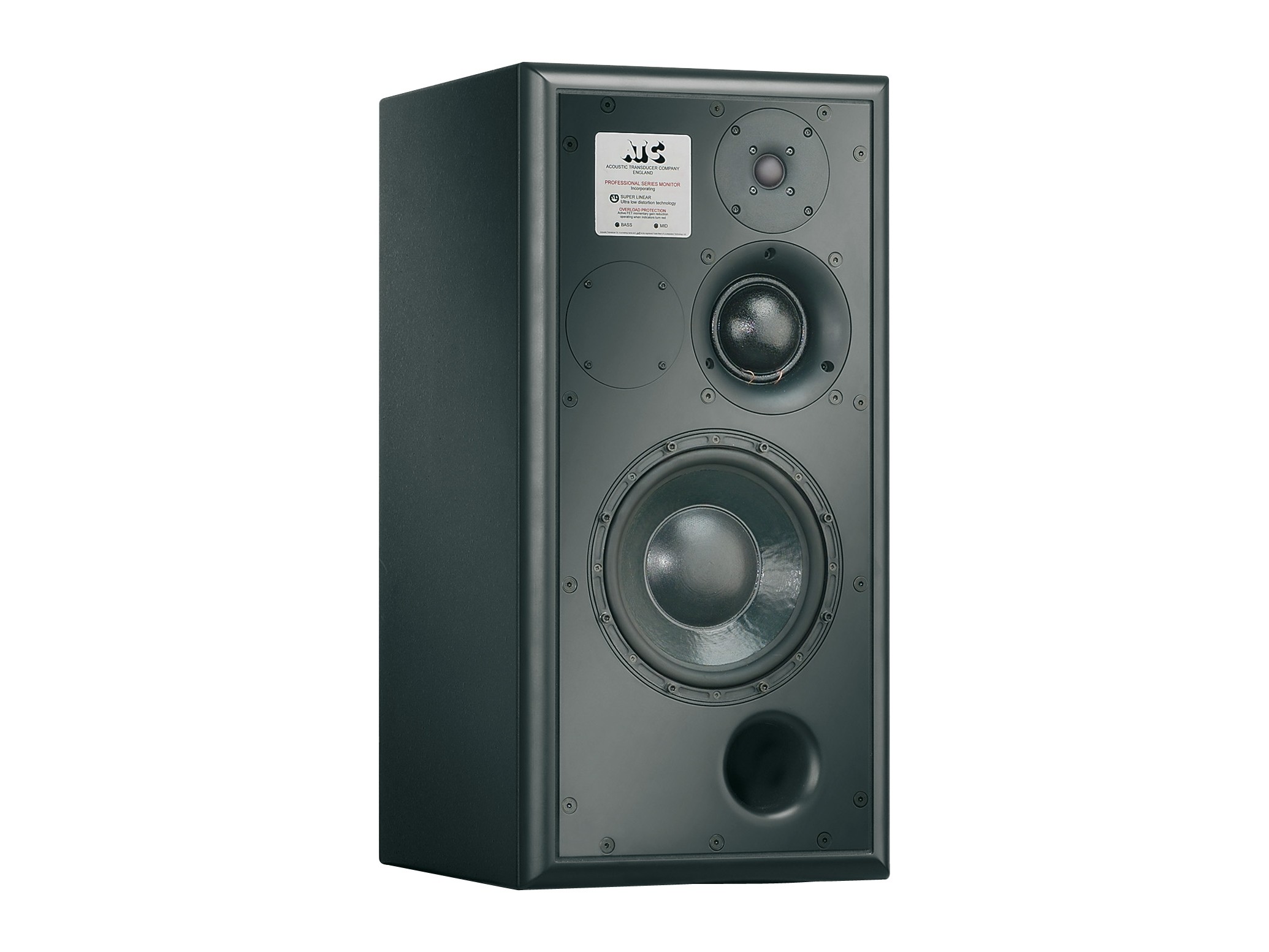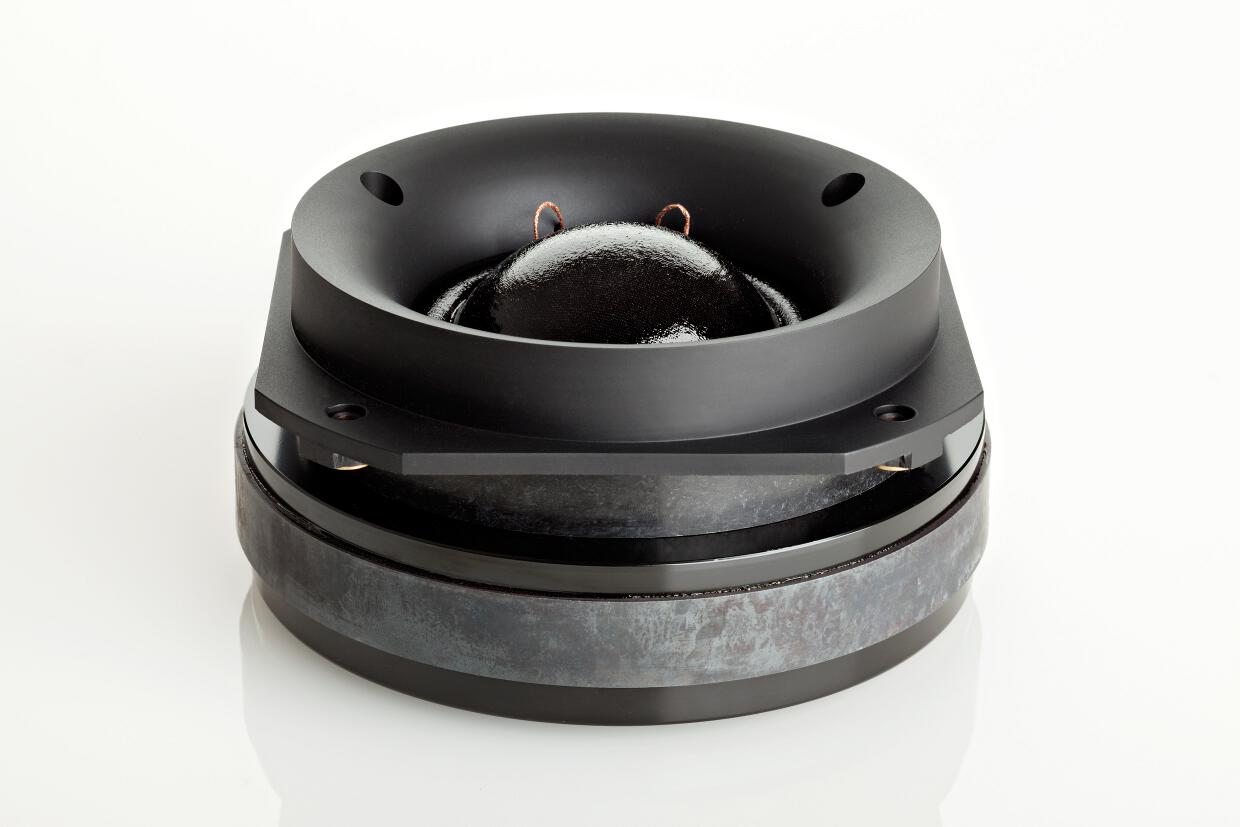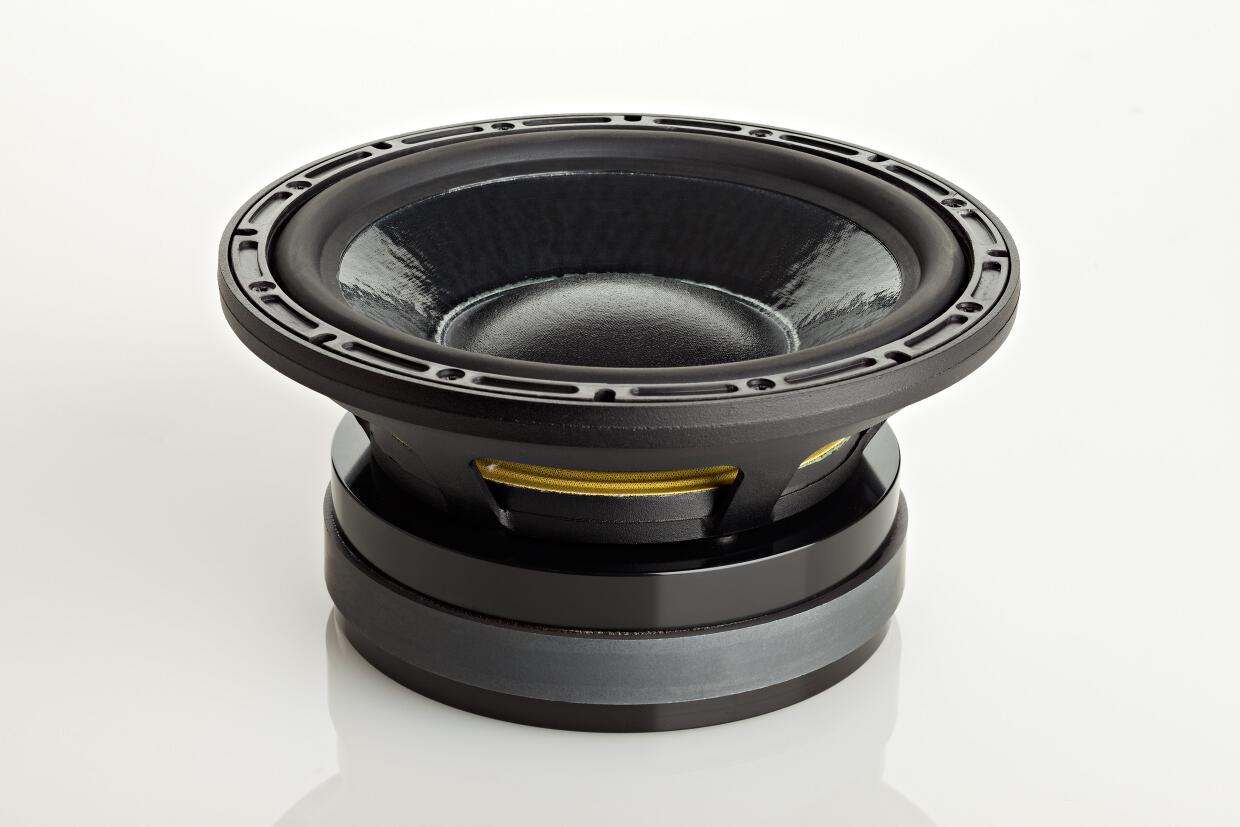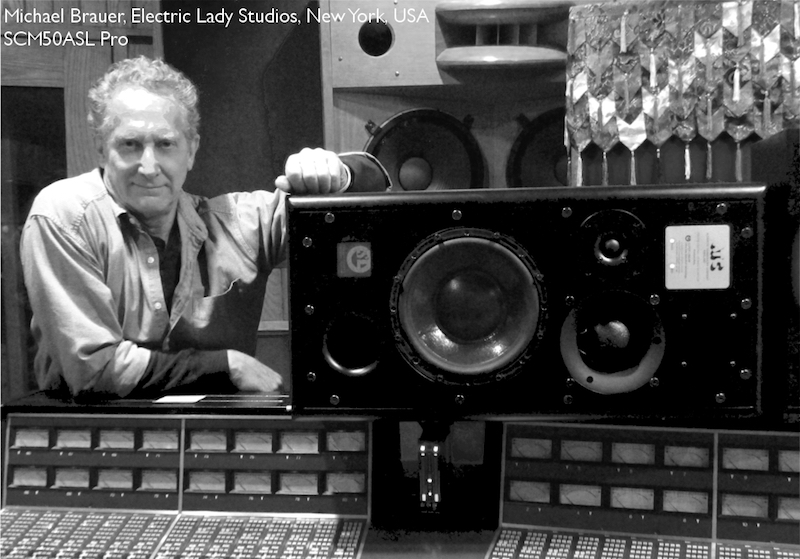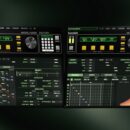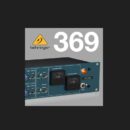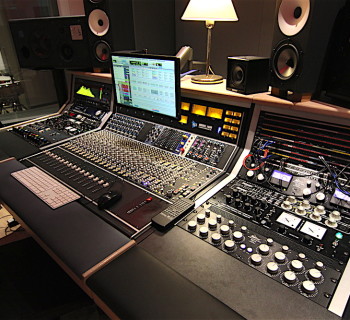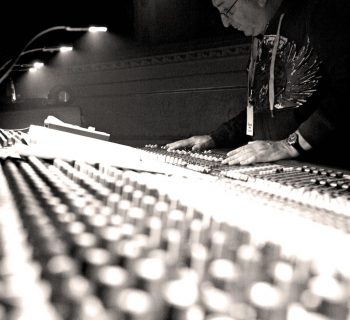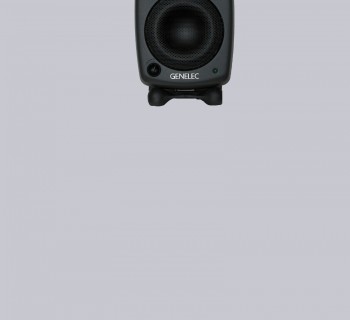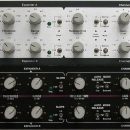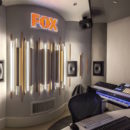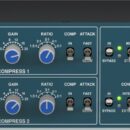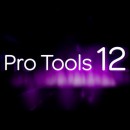We chased them for a year and finally took them into the studio to understand what is so different about them from other monitors and why they are the absolute benchmark at Blackbird in the celebrated Massenburg studio.
It is rather anomalous to introduce to the Italian public the ATC (Acoustic Transducer Company) brand, born in 1974, thanks to the ingenuity of Billy Woodman, an Australian emigrant to English soil who still heads the company today. Initially, production was aimed at drivers (the first was the 12" PA75-314). In 1976 came the 3" Soft Dome midrange driver, capable of handling a frequency range of 300 Hz to 3 kHz with minimal distortion and high sound pressure levels, built by hand. The first monitor system was born two years later, with the bass-reflex S50 passive and with a special crossover design that allowed true triamping. Fame came in 1985 when the BBC, Abbey Road, Sony Music Studio, Sydney Opera House, Paramount, and Warner Bros. became ATC customers. The real breakthrough, however, comes from Danish radio, which asks ATC to build an active monitor. Tim Isaac, who had already designed some crossover schemes for ATC, stepped in and made the first SCM 50 A triamped. At that time, active systems were not yet in vogue, so ATC produced passive variants for the Hi Fi market, such as the SCM 10 and SCM 20. Collaboration with Sony Music Studios in New York and the first studios with multichannel recording and mixing led ATC to develop, among the first, complete and dedicated surround systems, from C1 to C7. The SCM 300 and SCM 150 monitors became absolute benchmarks in the US. Massenburg's Studio C at the Blackbirds uses an SCM 150-based surround system. ATC's philosophy has remained the same over time and is very clear: Hi-Fi systems tend to be detailed and accurate but with limited dynamic range, unlike professional monitors that at the time had great dynamic range but little fidelity. ATC monitors are designed to provide the best from both areas. The problem faced by ATC concerns detail and accuracy that require light and delicate moving parts, while professional monitors are used at high levels and must have robust components. The only solution, according to ATC, is a design whose class and quality follow a precise choice of materials and the same rigorous criteria used in aerospace components without compromising on cost. ATC's professional systems today all have active crossovers and multi-amplification to support high listening levels.
SUPER LINEAR MAGNET TECHNOLOGY
How do find an improvement in a speaker's moving coil performance? ATC has developed Super Linear Magnet System technology to remove the obstacle of magnetic hysteresis, known since the 1930s. Simply put, a magnet has a nonlinear performance that introduces distortion into the signal and, thus, degradation that leads to timbral coloration. ATC's solution is the use of a new material that has the property of high magnetic permeability, high saturation level, and low electrical conductivity. ATC calls this material Super Linear Magnetic Material (SLMM). Some of ATC's speakers have a ring of SLMM that replaces the concentric iron region around the coil. Measurements show third harmonic attenuation of as much as 10 to 15 dB between 100 Hz and 3 kHz. The major benefit of this technology is the marked improvement in sound quality, with reduced distortion levels and the appearance of previously hidden sound information, such as ambient noise and finer timbral articulations. In other words, greater realism and naturalness of reproduction.
SCM 50 ASL PRO
After a lot of hard work (in fact, the single monitor weighs almost 49 kg), we installed the monitors in the studio. The SCM 50 ASL Pro have a one-inch (25 mm) soft dome tweeter, a three-inch (75 mm) dome driver for the midrange, and a nine-inch (234 mm) woofer. You will notice from the pictures that the tweeter and midrange driver are housed in a waveguide, while the woofer is not. Amplitude linearity at ± 2 dB is from 70 Hz to 17 kHz; frequency response (- 6 dB) is 38 Hz/20 kHz with a matched pair response of ± 0.5 dB. Horizontal dispersion is ± 80 degrees coherent, and vertical dispersion is ± 10 degrees coherent. The maximum SPL at one meter is 112 dB, and the two crossover frequencies are placed at 380 Hz and 3.5 kHz. The trim for sensitivity allows ± 6 dB adjustment. The second trim allows a maximum increase of 6 dB at 40 Hz. The manual clearly warns against moving the trims if you do not have the ability to subsequently measure the monitors to maintain consistency of level and amplification of the pair. Amplification consists of three-class A/B amplifiers: 200 W RMS for bass, 100 W RMS for midrange, and 50 W RMS for treble. It is interesting to note that the amplification is identical in power for models 50, 100, and 150, varying only in cabinet size and that of the woofer, with the tweeter and midrange driver remaining the same. Inside the amplifier are two separate circuits that protect all amplifiers, one of which is added protection for the tweeter only. The two green LEDs on the front turn red whenever the gain reduction for bass and midrange is distinctly triggered. Dimensions are 716x351x400 mm, to which three inches in depth must be added for the space occupied by the built-in amplifier. The warranty is extended to five years.
ON TEST
Three-way monitors are the obligatory step toward pure professionalism because such a system is much more balanced than a two-way monitor. Obviously. Anyone who has worked with three-way or midfield monitors knows that the air around the sound is all there, the boxy effect disappears, and everything finds a more natural place in the spectrum. Three-way monitors are also very pleasant to listen to because they are never small in sound and as heavy as a two-way system. A recording studio can only consider this as a necessary step; however, a project studio of adequate size to be able to develop the sound wave on the low end is also an important candidate. Having said that, let us turn to listening to the SCM 50 ASL Pro. Their placement turned out to be easier than expected. There is nothing to adjust and nothing to worry about in the future because they require no maintenance or periodic checks. The construction is perfect and sturdy; there are no poorly assembled parts or apparent problems with component stability. They are rock-solid but they are also easy to disassemble if any component needs to be worked on. We start with an initial test of parts we know well and our ears pop! Timpani and percussion we had never heard before appear; we cover the reverb detail behind the strings, and we can get clear on the arrangement of the orchestra. Everything flows naturally, and bringing the level up to emulate a live session, one cannot help but be amazed at the truthfulness, so much so that, finding the hot spot a few feet from the speakers, the impression is of individual musicians in front of us. Of monitors, we have heard and tried many, but this time there is a feeling of fluidity in the sound that leaves us awestruck by its beauty. The harmonics of the acoustic instruments stand out in combination with those of the others. Impressive is the quality of dynamics and micro-detail, which is expressed in the ambient noises and musical instruments, the breaths of the singers, and the fingernails of the guitarists. Our impressions are confirmed by testing a mix. Suddenly we realize, effortlessly, the amount of compression applied to the track, the work on the attacks, and the lack of definition on the sound. We picked up an earlier, completed production that sounded good to find that we would now have reduced the compression by a few dB and changed the EQ by a few dB as well. While the EQ appears consistent with the work done on the nearfields, except for increased peak visibility, it is the dynamics that are the real ace of the ATCs. We then take over the mix again, turn off the nearfields, and redo all the compressions to arrive at a more harmonious and natural sound. We run it over the AML1 PCMs to find that the mix now sounds truer and more natural. Yet we changed it by only a few dB, but that was very noticeable on the ATCs! We then pick up the Delovely soundtrack, coincidentally mixed by Massenburg with the ATCs, to have the comparison and discover, now without surprise, that with the ATCs it sounds like we have all the components in front of us, with beautiful, true voices. It's hard to break away from them. And the timbre? These are clear monitors, they don't give away much and they don't sound rock or hip-hop, they are simply real and not EQ'd to give impressions of body and punch that aren't there. The punch here is created in the mix of the individual tracks, and if you listen for it on the ATCs, it will be present everywhere. After hours of listening at all levels (perhaps just the amplification is a bit under dosed relative to the size), no fatigue or headaches, just a precise focus on the sound, facilitated also by that dome midrange driver that allows you to move horizontally many degrees while always focusing the sound field in the center. It has been said, finally, that the ATCs are a bit lacking in bass. In fact, we must point out that while tweeters and midrange drivers are inserted in a waveguide that allows the hot spot to widen, the woofer is the most directional component of these monitors (it should be the other way around, generally). It is important to be aligned with the woofers to get the same feel as waveguide models. Our doubt, however, is that it is the other monitors that are artificially enhancing the bass. In fact, listening to mixes on these monitors, there is a distinct perception of natural bass work and musical instruments rich in low frequencies, as opposed to other monitors where the bass seems like an ill-defined wall. The SCM 50s reach 38 Hz without any problems, and that is what counts.
CONCLUSIONS
Not everyone will be able to afford these ATCs in the studio, but we wanted to start with this classic to introduce a well-known and highly regarded manufacturer abroad that is less talked about than it really should be. The SCM 50s are an absolute guarantee when you want to work with acoustic and rock music, when musical instruments are played and vocals or timbres have to be studied down to the smallest detail, as do the environments. In the case of electronic music, their qualities are almost wasted.
Their immense strength is in the dynamic detail, which never appears so evident on other monitors, and this difference is crucial in the mixing and mastering stages to bring home a fast and perfectly calibrated job. Price is their limitation, but if
If you are looking for a Ferrari, it is unlikely that the price tag will be your first concern.
INTERVIEW WITH BOB POLLEY
Among the curiosities hovering around ATC is the kindness of their managers, confirmed by the speed of their responses to our questions. There are indeed many uncontrolled rumors about components that ATC would sell to other manufacturers, and we wanted to see for ourselves.
LP Let's dispel any doubts: are SCM 50s bass reflex systems or not?
BP They are bass reflex monitors but with a special feature: the port is tuned very low, toward 30 Hz, to control cone movement and reduce distortion. The port is not designed to increase the bass output level.
LP Are the tweeters the same as those used by PMC?
BP I have no idea if PMC uses the same tweeters that they build to our specifications. Incidentally, we will be launching our own proprietary Twitter later this year.
LP Are there any SCM50 internal components that are also sold separately to other manufacturers?
BP No, there are no SCM50 components sold as OEMs. There was a time when we used to supply the dome driver of the SCM 150 to other manufacturers, but now that doesn't happen anymore. We do, however, continue to supply our standard dome driver and short coil units. The standard dome driver is used, for example by Proac, and PMC used them a few years ago. We do not supply our SLMM drivers to any manufacturer.
LP Are the amplifiers in class A?
BP The amplifiers work in Class A for most of the circuit and only at the output are they in Class B.
LP Is it possible to mount the ATC 50 horizontally?
BP It is possible to horizontally mount the Pro version of all ATC monitors by moving the tweeter to the second position, covered by a metal hoop. However, this is a compromise and it is always preferable to use them vertically.
LP In which drivers is SLMM technology used?
BP SLMM technology becomes important only in midrange and bass drivers larger than 150 mm in diameter.
LP What are the differences between ATC's other three-way monitors?
BP The only differences are in size, efficiency and dynamic range. The tweeter and midrange driver, as well as amplification, are identical for all models.
Article published in June 2008


